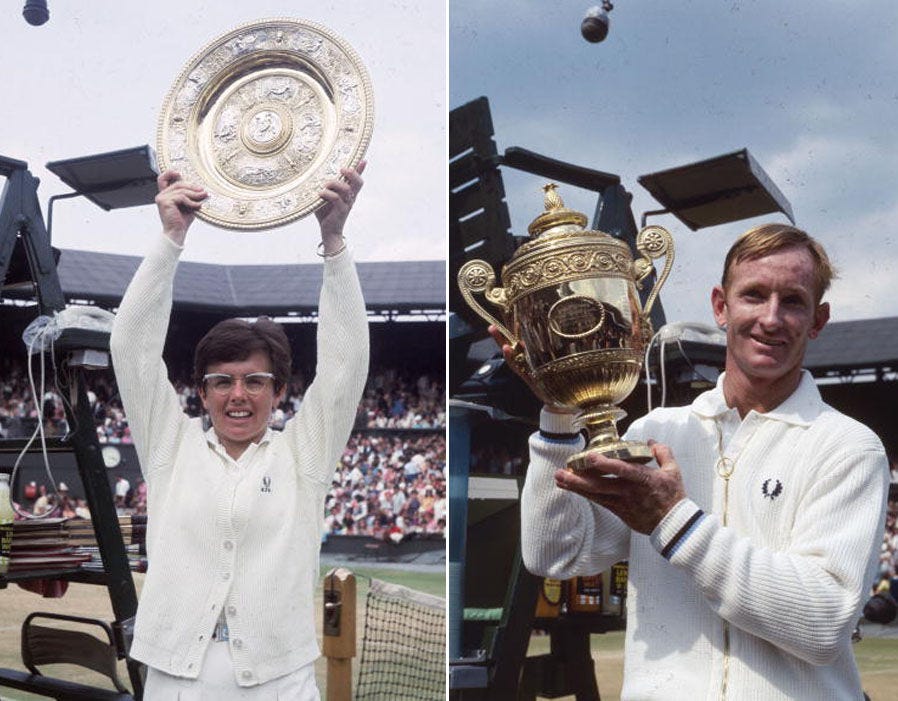Summer Kicks-in at Wimbledon Qualifiers - as Competitors Eye Bumper Prize Pot
A place at the world's most prestigious tennis tournament is on offer in Roehampton this week - with 16 men's and women's players looking to earn a slice of £53.5m.
Roehampton’s Community Sports Centre (formerly the Bank of England Sport’s Club) may lack the imposing grandiose façade of the All England Lawn Tennis Club (AELTC) at Wimbledon, but as the English sporting summer goes through the gears, events at the former over the next few days could still be hugely significant.
Not least for the bank balances of those players involved.
This year’s Wimbledon is a bumper edition - with the money on offer having risen significantly from the 2024 prize pot.
And the qualifiers have followed suit. There will 128 players lining up in the men’s and women’s draw in Roehampton, all aiming to make it to the first round of the 138th edition of the tournament, and a guaranteed payday of £66,000 - a 10% hike in prize money from the sum awarded in 2024.
The qualifiers themselves offer the kind of riches that are pie-in-the-sky for players who are more commonly seen on the Challenger tour, with the total prize fund on offer for players at Roehampton this week just short of £5m.
And in this particular tournament, you win even if you lose. Making it into the first round of the Wimbledon qualifiers will earn you £15,500, get to round two and that figure jumps to £25,000. Make it to the final 32 of qualifying (16 players will make it to the tournament proper), and your quid’s in to the tune of £41,500.
All of those sums are then put in the shade by the money you’re guaranteed for an appearance in the tournament’s first round. The prize pot on offer across the tournament as a whole, meanwhile, has also seen a significant uplift this summer.
In all, competitors descending on SW19 for what organisers hope will be a sun-drenched fortnight, will be playing for a slice of £53.5m - a seven per cent year-on-year increase. The winners of the men’s and women’s tournament will receive £3m, a rise of £300,000 on sum on offer in 2024.
It’s a far cry from 1968, when Wimbledon first entered the open era. That tournament saw Rod Laver take £2000 back to Australia, while Billie Jean-King won just £750. That pay discrepancy would finally be addressed in 2007, following a 39-year battle.
Billie Jean-King and Rod Laver lift the 1968 Wimbledon titles, with very different financial prizes on offer.
On the court, this year’s qualifying tournament is not short of star quality. The women’s draw, for example, includes Canada’s first ever Grand Slam winner, Bianca Andreescu, who lifted the U.S. Open winner as recently as 2019, as well as Taylor Townsend, a Wimbledon semi-finalist six years ago.
For the men, all eyes will be on the American pairing of Christopher Eubanks and Ethan Quinn, ranked 105 and 106 in the ATP rankings, but threats to far higher seeds on grass.
Rob’s Takeaways
Wimbledon’s Financial Ecosystem Extends Beyond Centre Court; The Roehampton qualifiers demonstrate that meaningful financial uplift is no longer confined to the main draw. By redistributing prize money deeper into the pyramid, the AELTC supports sustainability for fringe and lower-ranked players presenting a model other tournaments should look at.
Incremental Prize Money Growth Reflects a Strategic Commercial Positioning; A 10% increase for qualifiers and a 7% uplift overall are not just generosity, they’re tactical. Wimbledon is solidifying its prestige by ensuring it remains the most aspirational (and rewarding) Grand Slam for players at all stages.
Rising Reward for Qualifiers Narrows the Equity Gap in Tennis; The increased Roehampton pot of almost £5 million, sends a powerful message about inclusivity and viability for players outside the top 100. It’s a financial strategy that balances elitism with accessibility, and one that enhances talent retention.
Historical Disparities Reinforce the Need for Ongoing Governance Oversight; The reference to 1968’s gender pay gap, finally rectified in 2007, is a stark reminder of the role governing bodies play in ensuring equity. The commercial success of the sport must always be balanced with values-driven leadership.
Star Power in the Qualifiers Boosts Commercial Value Across the Board; High-profile names like Andreescu and Townsend in the early rounds add broadcast and sponsor value beyond the headline events. For tournament organisers, this expands monetisation potential across the tournament timeline.




